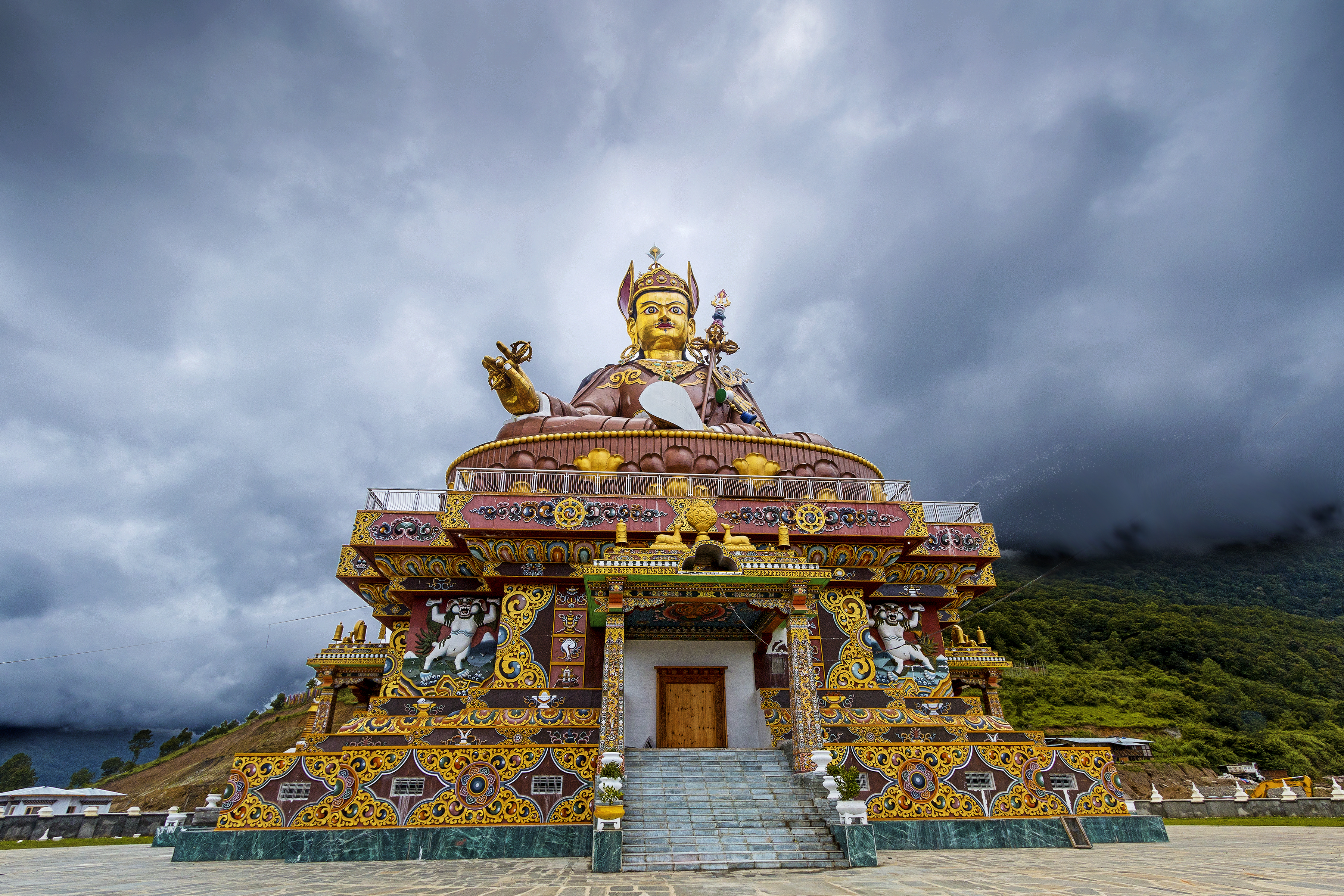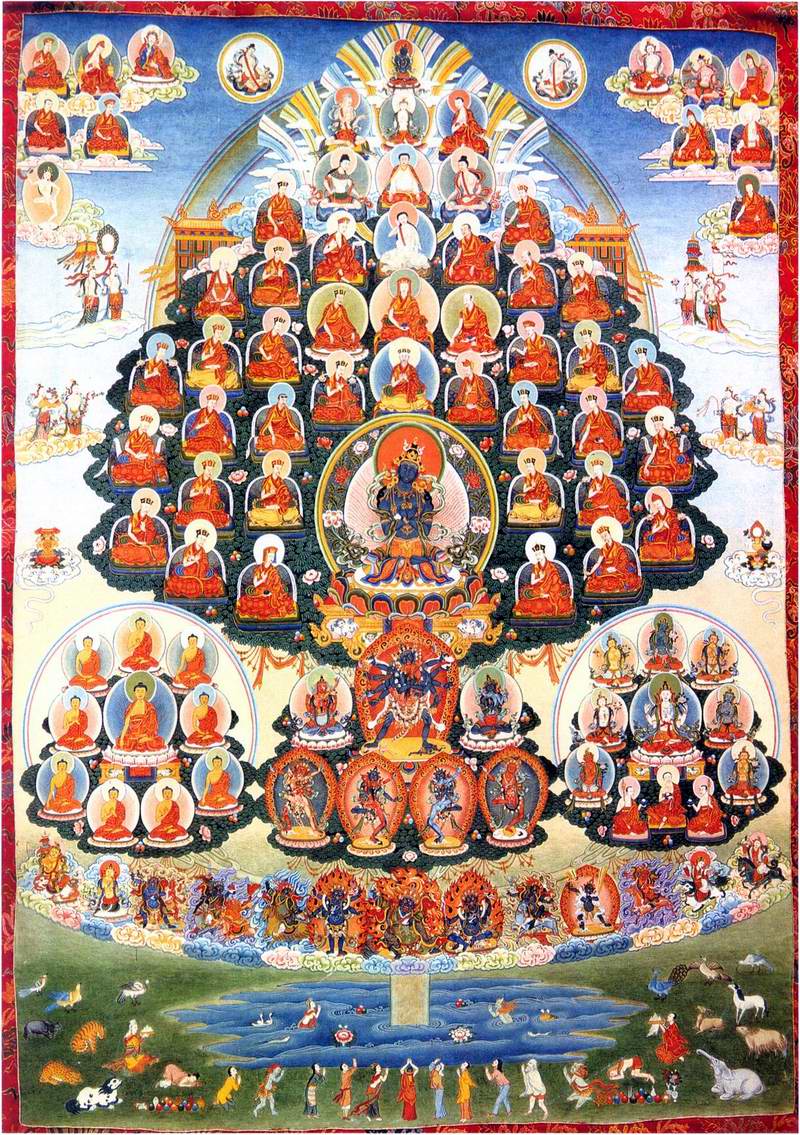|
Shechen Gyaltsab
Shechen Gyaltsab (1871–1926) was a principal lineageholder of Tibetan Buddhism. As an ecumenical, he studied with Nyingma and Sarma schools. Nomenclature and etymology Shechen Gyaltsab's full name was Shechen Gyaltsab Gyurme Pema Namgyal. Birth and youth Shechen Gyaltsab was born at Dzokyi Tsolung within the region of Lhatok and Derge. Alak Zenkar Rinpoche states that Shechen Gyaltsab: From his own uncle, Pema Wangchen—or Kyi Yang as he was widely known—he learned how to read and received teachings on the common sciences, including The Mirror of Poetics, the three systems of Sanskrit grammar (known as Kalapa, Chandrapa and Sarasvata), The Treasure Mine of Composition,''The Treasure Mine of Composition'' (Tibetan: ''sdeb sbyor rin chen ‘byung gnas'') by Minling Lochen Dharmashri (1654-1718). the major texts of the ‘white’ and ‘black’ astrological traditions and so on.Zenkar, Alak (undated). ''The Life of Shechen Gyaltsab Gyurme Pema Namgyal''. Source(accessed: ... [...More Info...] [...Related Items...] OR: [Wikipedia] [Google] [Baidu] |
Tibetan Buddhism
Tibetan Buddhism (also referred to as Indo-Tibetan Buddhism, Lamaism, Lamaistic Buddhism, Himalayan Buddhism, and Northern Buddhism) is the form of Buddhism practiced in Tibet and Bhutan, where it is the dominant religion. It is also in majority regions surrounding the Himalayan areas of India (such as Ladakh, Sikkim, Arunachal Pradesh, and a minority in Himachal Pradesh and Uttarakhand), in much of Central Asia, in the southern Siberian regions such as Tuva, and in Mongolia. Tibetan Buddhism evolved as a form of Mahāyāna Buddhism stemming from the latest stages of Indian Buddhism (which also included many Vajrayāna elements). It thus preserves many Indian Buddhist tantric practices of the post-Gupta early medieval period (500 to 1200 CE), along with numerous native Tibetan developments. In the pre-modern era, Tibetan Buddhism spread outside of Tibet primarily due to the influence of the Mongol Yuan dynasty (1271–1368), founded by Kublai Khan, which had rul ... [...More Info...] [...Related Items...] OR: [Wikipedia] [Google] [Baidu] |
Wang (Tibetan Buddhism)
In Vajrayāna Buddhism, esoteric transmission is the transmission of certain teachings directly from teacher to student during an empowerment (''abhiṣeka'') in a ritual space containing the mandala of the deity. Many techniques are also commonly said to be secret, but some Vajrayana teachers have responded that secrecy itself is not important and only a side-effect of the reality that the techniques have no validity outside the teacher-student lineage. The secrecy of teachings was often protected through the use of allusive, indirect, symbolic and metaphorical language (twilight language) which required interpretation and guidance from a teacher. The teachings may also be considered "self-secret", meaning that even if they were to be told directly to a person, that person would not necessarily understand the teachings without proper context. In this way, the teachings are "secret" to the minds of those who are not following the path with more than a simple sense of curiosity. B ... [...More Info...] [...Related Items...] OR: [Wikipedia] [Google] [Baidu] |
Tibetan Buddhists From Tibet
Tibetan may mean: * of, from, or related to Tibet * Tibetan people, an ethnic group * Tibetan language: ** Classical Tibetan, the classical language used also as a contemporary written standard ** Standard Tibetan, the most widely used spoken dialect ** Tibetan pinyin, a method of writing Standard Tibetan in Latin script ** Tibetan script ** any other of the Tibetic languages Tibetan may additionally refer to: Culture * Old Tibetan, an era of Tibetan history * Tibetan art * Music of Tibet * Tibetan rug * Tibetan culture * Tibetan cuisine Religion * Tibetan Buddhism * Tibetan Muslims Other uses * Tibetan alphabet * Tibetan (Unicode block) * Tibetan name * Tibetan calendar * Tibetan Spaniel, a breed of dog * Tibetan Mastiff, a breed of dog See also * Tibetan Bells (other) * Traditional Tibetan medicine Traditional Tibetan medicine (), also known as Sowa-Rigpa medicine, is a centuries-old traditional medical system that employs a complex approach to diagnosis, incor ... [...More Info...] [...Related Items...] OR: [Wikipedia] [Google] [Baidu] |
Nyingma Lamas
Nyingma (literally 'old school') is the oldest of the four major schools of Tibetan Buddhism. It is also often referred to as ''Ngangyur'' (, ), "order of the ancient translations". The Nyingma school is founded on the first lineages and translations of Buddhist scriptures from Sanskrit into Tibetan in the eighth century, during the reign of King Trisong Detsen (r. 710–755). Nyingma traditional histories consider their teachings to trace back to the first Buddha Samantabhadra (Güntu Sangpo) and Indian mahasiddhas such as Garab Dorjé, Śrī Siṃha and Jñānasūtra. Traditional sources trace the origin of the Nyingma order in Tibet to figures associated with the initial introduction of Buddhism in the 8th century, such as Padmasambhava, Yeshe Tsogyal, Vimalamitra, Vairotsana, Buddhaguhya and Shantaraksita. The Nyingma tradition is also seen having been founded at Samyé, the first monastery in Tibet. Nyingma teachings are also known for having been passed down throug ... [...More Info...] [...Related Items...] OR: [Wikipedia] [Google] [Baidu] |
1926 Deaths
Nineteen or 19 may refer to: * 19 (number), the natural number following 18 and preceding 20 * one of the years 19 BC, AD 19, 1919, 2019 Films * ''19'' (film), a 2001 Japanese film * ''Nineteen'' (film), a 1987 science fiction film Music * 19 (band), a Japanese pop music duo Albums * ''19'' (Adele album), 2008 * ''19'', a 2003 album by Alsou * ''19'', a 2006 album by Evan Yo * ''19'', a 2018 album by MHD * ''19'', one half of the double album '' 63/19'' by Kool A.D. * '' Number Nineteen'', a 1971 album by American jazz pianist Mal Waldron * ''XIX'' (EP), a 2019 EP by 1the9 Songs * "19" (song), a 1985 song by British musician Paul Hardcastle. * "Nineteen", a song by Bad4Good from the 1992 album ''Refugee'' * "Nineteen", a song by Karma to Burn from the 2001 album ''Almost Heathen''. * "Nineteen" (song), a 2007 song by American singer Billy Ray Cyrus. * "Nineteen", a song by Tegan and Sara from the 2007 album '' The Con''. * "XIX" (song), a 2014 song by S ... [...More Info...] [...Related Items...] OR: [Wikipedia] [Google] [Baidu] |
1871 Births
Events January–March * January 3 Events Pre-1600 * 69 – The Roman legions on the Rhine refuse to declare their allegiance to Galba, instead proclaiming their legate, Aulus Vitellius, as emperor. * 250 – Emperor Decius orders everyone in the Roman Empire (except ... – Franco-Prussian War – Battle of Bapaume: Prussians win a strategic victory. * January 18 – Proclamation of the German Empire: The member states of the North German Confederation and the south German states, aside from Austria, unite into a single nation state, known as the German Empire. The King of Prussia is declared the first German Emperor as Wilhelm I of Germany, in the Hall of Mirrors at the Palace of Versailles. Constitution of the German Confederation (1871), Constitution of the German Confederation comes into effect. It abolishes all restrictions on Jewish marriage, choice of occupation, place of residence, and property ownership, but exclusion from government employm ... [...More Info...] [...Related Items...] OR: [Wikipedia] [Google] [Baidu] |
Phurba
The ''phurba'' (; alternate transliterations: ''phurpa'', ''phurbu'', ''purbha'', or ''phurpu'') or ''kīla'' (Sanskrit Devanagari: कील; IAST: kīla) is a three-sided peg, stake, knife, or nail-like ritual implement traditionally associated with Indo-Tibetan Buddhism, Bön, and Indian Vedic traditions. The phurba is associated with the practice of the meditational deity (Sanskrit ''ishtadevata'', Tibetan ''yidam'') Vajrakīlaya (Tibetan ''Dorje Phurba'') or Vajrakīla (वज्रकील). Etymology Most of what is known of the Indian ''kīla'' lore has come by way of Tibetan culture. Scholars such as F. A. Bischoff, Charles Hartman and Martin Boord have shown that the Tibetan literature widely asserts that the Sanskrit for their term ''phurba'' is ''kīlaya'' (with or without the long ''i''). However, as Boord describes it, Mayer (1996) contests Boord's assertion, pointing out that eminent Sanskritists such as Sakya Pandita employed ''Vajrakīlaya''. Furth ... [...More Info...] [...Related Items...] OR: [Wikipedia] [Google] [Baidu] |
Refuge Tree
The imagery of the Refuge Tree, also referred to as Refuge Assembly, Refuge Field, Merit Field, Field of Merit or Field of Accumulation (Tibetan: ཚོགས་ཞིང་།, Wylie: ''tshogs zhing'') is a key part of a visualization and foundational meditation practice common to Tantric Buddhism. Based on descriptions in the liturgical texts of various traditions, Refuge Trees are often depicted in thangkas employed as objects of veneration, mnemonic devices and as a precursor to the contents being fully visualized by the Buddhist practitioner during the Refuge Formula or evocation. While the concept of Refuge Trees appears in liturgical texts at least as early as the 16th century, based on known examples Refuge Tree paintings appear to have only become popular from the 18th century making them a late development in the history of Tibetan art. Content Refuge Tree or Refuge Field paintings depict the important objects of " Refuge" for each sect or lineage in the form of a gen ... [...More Info...] [...Related Items...] OR: [Wikipedia] [Google] [Baidu] |
Ösel (yoga)
Luminous mind ( Skt: or , Pali: ; Tib: ; Ch: ; Jpn: ; Kor: ) is a Buddhist term which appears only rarely in the Pali Canon, but is common in the Mahayana sūtras and central to the Buddhist tantras. It is variously translated as "brightly shining mind", or "mind of clear light" while the related term ''luminosity'' (Skt. ; Tib. ; Ch. ; Jpn. ; Kor. ) is also translated as "clear light" or "luminosity" in Tibetan Buddhist contexts or, " purity" in East Asian contexts. The Theravada school identifies the "luminous mind" with the '' bhavanga'', a concept first proposed in the Theravāda Abhidhamma. The later schools of the Mahayana identify it with '' bodhicitta'' and ''tathagatagarbha''. The luminosity of mind is of central importance in the philosophy and practice of the Buddhist tantras, Mahamudra, and Dzogchen. Early Buddhist texts In the Early Buddhist Texts there are various mentions of luminosity or radiance which refer to the development of the mind in ... [...More Info...] [...Related Items...] OR: [Wikipedia] [Google] [Baidu] |
Bhumi (Buddhism)
Bhumi may refer to: * Bhūmi, Hindu goddess of the earth **also, earth as a classical element in Hindu tradition * Bhūmi (Buddhism), the ten stages a Bodhisattva advances through in the path to become a Buddha * BHUMI (organisation), a Chennai-based youth volunteer non-profit organization * Bangabhumi, a separatist movement to create a Hindu country using southwestern Bangladesh, envisioned by Banga Sena See also * Bhoomi (other) Bhoomi may refer to: * Bhūmi, Hindu goddess * Bhoomi (band), a band in Kolkata, India * ''Bhoomi'' (2017 film), a film by director Omung Kumar * Bhoomi (2021 film), a Tamil-language film * ''Boomi'' (software), a land records automation solutio ... * Dell Boomi, a technology company named after the Hindu goddess {{disambiguation ... [...More Info...] [...Related Items...] OR: [Wikipedia] [Google] [Baidu] |
Dzog Rim
Tibetan tantric practice, also known as "the practice of secret mantra", and "tantric techniques", refers to the main tantric practices in Tibetan Buddhism. The great Rime scholar Jamgön Kongtrül refers to this as "the Process of Meditation in the Indestructible Way of Secret Mantra" and also as "the way of mantra," "way of method" and "the secret way" in his ''Treasury of Knowledge''. These Vajrayāna Buddhist practices are mainly drawn from the Buddhist tantras and are generally not found in "common" (i.e. non-tantric) Mahayana. These practices are seen by Tibetan Buddhists as the fastest and most powerful path to Buddhahood. In Tibetan Buddhism, the higher tantric yogas are generally preceded by preliminary practices ( Tib. '' ngondro''), which include sutrayana practices (i.e. non-tantric Mahayana practices) as well as preliminary tantric meditations. Tantric initiation is required to enter into the practice of tantra. '' Unsurpassable Yoga Tantra'', (Skt. ''anuttarayo ... [...More Info...] [...Related Items...] OR: [Wikipedia] [Google] [Baidu] |
.jpeg/1200px-Tibetan_Buddhism_(214837929).jpeg)
.jpg)

_(LOC)_-_Flickr_-_The_Library_of_Congress.jpg)
.jpg)

